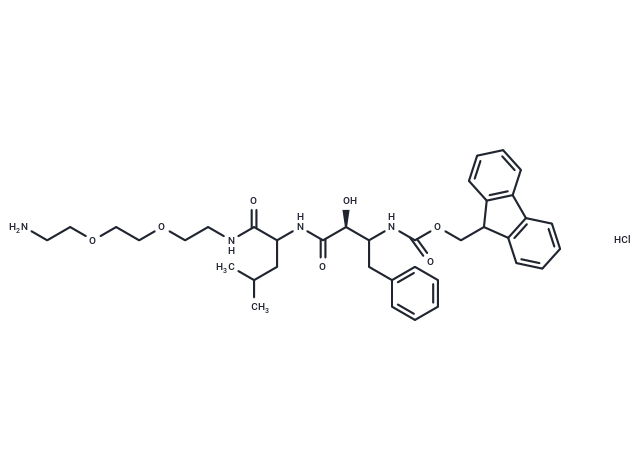Shopping Cart
- Remove All
 Your shopping cart is currently empty
Your shopping cart is currently empty

cIAP1 Ligand-Linker Conjugates 2 Hydrochloride is a chemical compound that combines an IAP ligand, targeting the E3 ubiquitin ligase, with a PROTAC linker and is utilized in the creation of SNIPERs[1].

| Pack Size | Price | Availability | Quantity |
|---|---|---|---|
| 100 mg | Inquiry | Backorder | |
| 500 mg | Inquiry | Backorder |
| Description | cIAP1 Ligand-Linker Conjugates 2 Hydrochloride is a chemical compound that combines an IAP ligand, targeting the E3 ubiquitin ligase, with a PROTAC linker and is utilized in the creation of SNIPERs[1]. |
| Alias | E3 ligase Ligand-Linker Conjugates 37 Hydrochloride, cIAP1 Ligand-Linker Conjugates 2 Hydrochloride (1312302-14-9 free base) |
| Molecular Weight | 697.26 |
| Formula | C37H49ClN4O7 |
| Relative Density. | no data available |
| Storage | Powder: -20°C for 3 years | In solvent: -80°C for 1 year | Shipping with blue ice. |

Copyright © 2015-2024 TargetMol Chemicals Inc. All Rights Reserved.